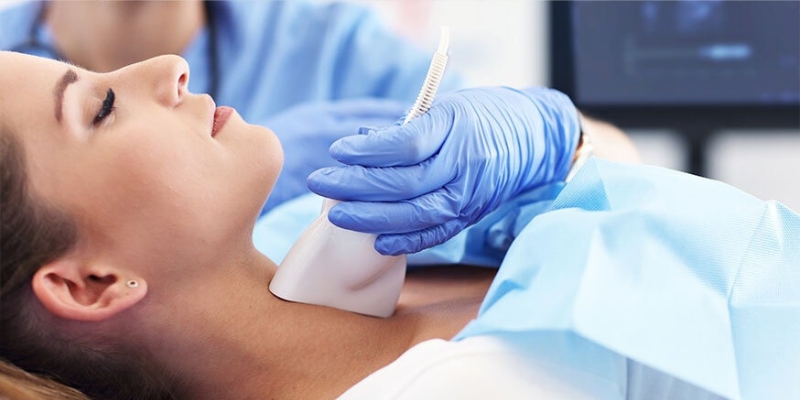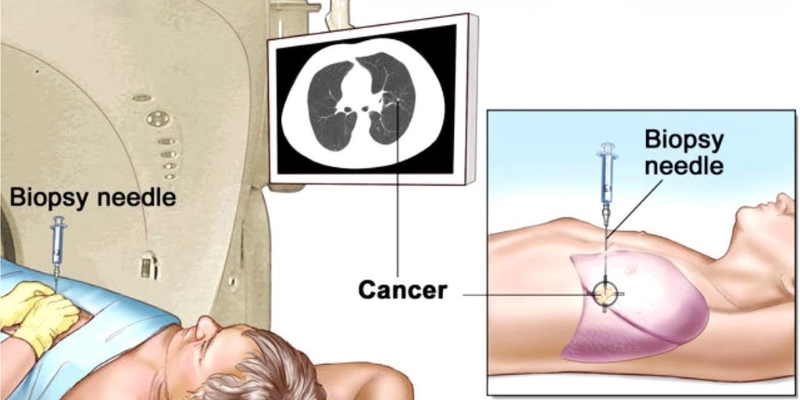
Using ultrasound technology to assist specialist radiologists in performing needle biopsies or FNACs is known as an ultrasound guided biopsy or FNAC.
The specialist radiologist locates and guides a specialised needle to the appropriate part of the body using the ultrasound equipment during an ultrasound-guided procedure. After that, a tissue sample is taken using the needle before it is gently taken out of the body.
Samples from many bodily areas can be obtained by ultrasound-guided biopsies. The following are the most typical ultrasonography biopsy procedures:
Ultrasounds have not been linked to any known dangers. Ultrasound does not expose the patient to radiation, in contrast to CT scans and X-rays.
After a biopsy, the risk of infection and internal bleeding is relatively minimal.
Just let the doctor know about any allergies, current medical problems, or drugs that can affect the biopsy or the results to lower the chance of issues during the surgery.
Simple, safe procedures, ultrasounds provide comprehensive views of the body’s interior organs. Utilising this technology during a biopsy improves the procedure’s accuracy by guaranteeing that medical professionals find and extract a sample of the worrisome tissue in the most expedient and secure manner feasible.

Before undergoing an ultrasound biopsy you should let the doctor know if you:
You should bring any prior pictures your doctor might want, as well as any drugs you use.
The procedure will take between 30 to 45 minutes to complete.
You will lay down on an examination table and get a local anaesthetic when you are prepared for the operation; not all biopsies need this. Throughout the entire process, you will remain conscious. To allow the doctor to see where to place the needle on a monitor, a transducer will be run over the skin after a gel has been placed. A tissue sample will be taken when the needle has been gently placed into the appropriate location; many samples could be needed. Ultrasound imaging will guide the whole operation.
A dressing will be put following the treatment. This should last for 24 to 48 hours.
A wrapped cold pack or analgesia (Paracetamol) may be administered to the biopsy site if it continues to hurt after a while (as per dose guidelines on packaging).
Depending on the biopsied location, you could be told to avoid hard lifting for 48 hours.
We suggest that you consult your general practitioner right away if you encounter any symptoms that worry you.